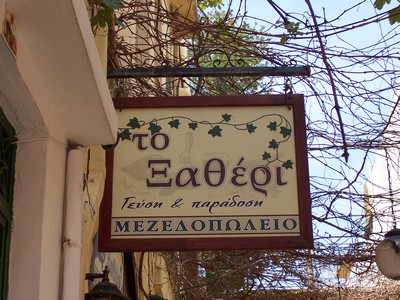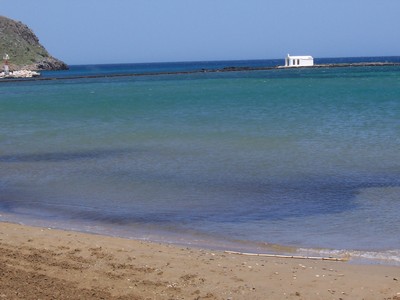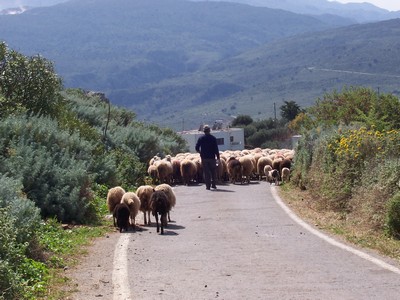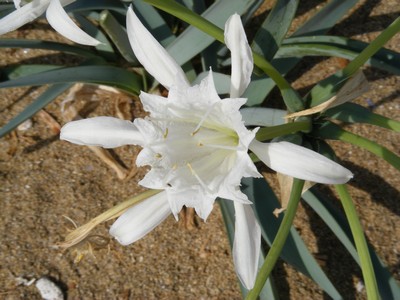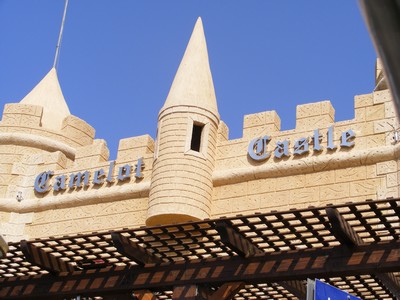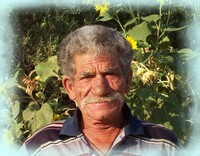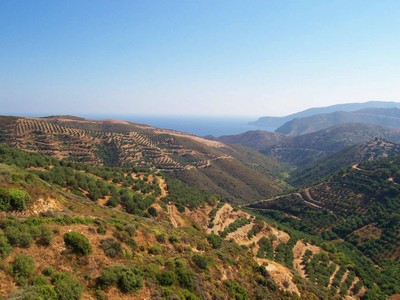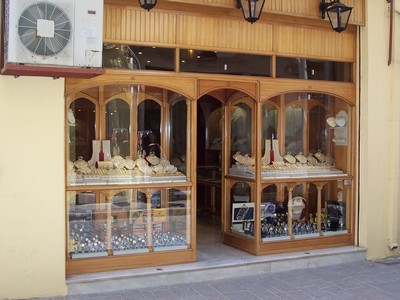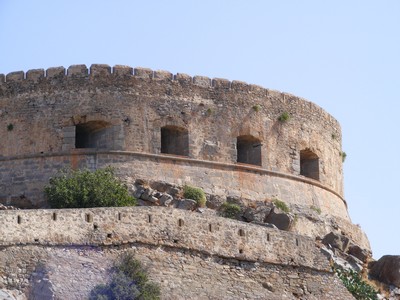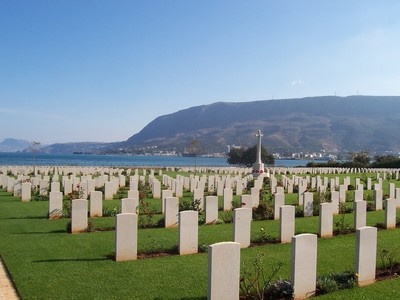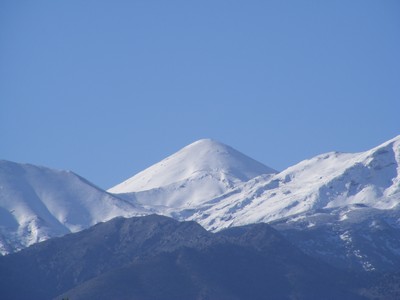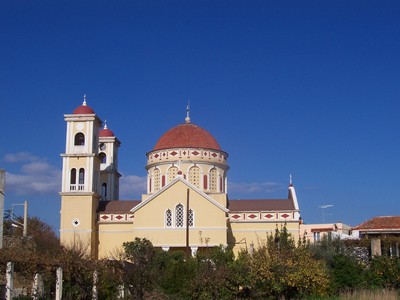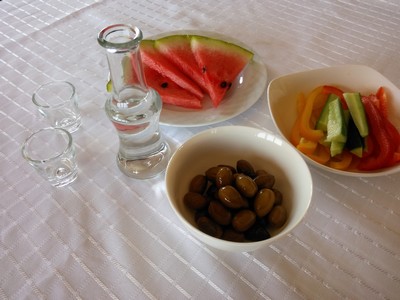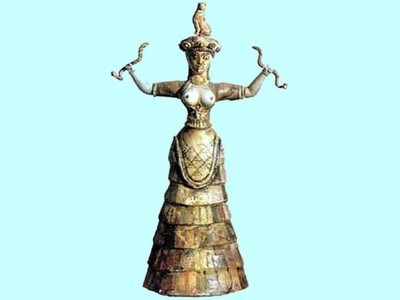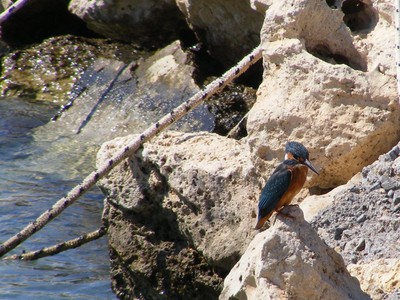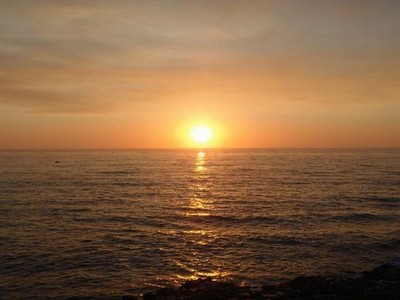Crazy about the Greek island of Crete!
Knossos Ancient Palace Guide
Table of Contents
Introduction to Our Knossos Ancient Palace Guide
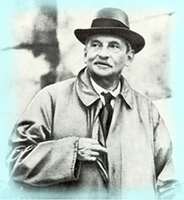
Here you can learn all about Knossos with our Knossos Ancient Palace Guide.
Knossos is an ancient site. Occupied since 7000 BC by people's of the Neolithic Period.
The Minoans emerged around 2700 BC and flourished up to 1450 BC.
The term Minoan was coined by Sir Arthur Evans, a (British born) archaeologist, who excavated the site here at Knossos.
He named the people after the mythic King Minos. Knossos is the most important and most fascinating Minoan legacy in the world.
The Minoan civilization is largely a mystery to scholars, and all we have learned about their culture is derived from the legacy they have left us: their beautiful art, architecture, and artifacts.
Knossos is one of three major Minoan sites, the others being at Phaestos and Malia.
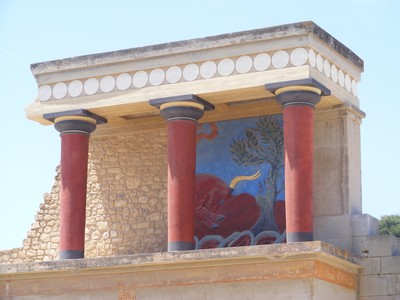
An interesting feature of this archaeological site is it's restoration.
Unlike most ancient sites, an attempt has been made to restore some monuments to what is believed to have been their original state.
The restorations were carried out by Arthur Evans. Criticism of this approach has been fended off by suggesting that such interventions were necessary to preserve the monuments as they became exposed.
It certainly does give a very good impression of what the monuments would have looked like and well worth a look.
Knossos Ancient Palace Guide:
The Monuments
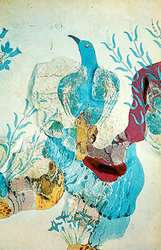
There are several monuments at Knossos:
The Palace of Knossos. Of all the Palaces this is the largest. With a central courtyard surrounded by 4 wings.
The Little Palace. A smaller palace west of the main
The Royal Villa. Thought to be the home of a religious aristocrat of the Minoan period or even a priest. It's north and east of the main palace.
House of the Frescoes. This is a smaller house with richly decorated frescoes on the walls.
Caravanserai. Thought to be a reception hall. It has painted walls and is equipped with baths, thought to be connected with healing.
The "Unexplored Mansion". This is located north and west of the main palace.
Temple Tomb. So called because it is thought that one of the last Kings of Knosses is buried here.
House of the High Priest. Lying about 300 m. south of the Caravanserai and connected to the Temple Tomb by a paved pathway.
The South Mansion. A three story Private civic house,
Villa of Dionysos. So called because of its fabulous mosaic depicting the Greek God. Thought to be a private house.
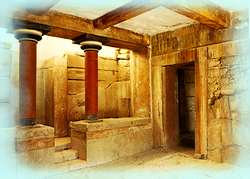 ROYAL VILLA KNOSSOS
ROYAL VILLA KNOSSOS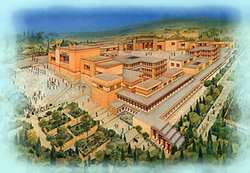 ARTISTIC IMPRESSION OF KNOSSOS
ARTISTIC IMPRESSION OF KNOSSOSKnossos Ancient Palace Guide:
The Legends
Zeus, the greatest of all the Gods, gave birth to a son called Minos. It was Minos who became King of Knossos, Crete, and the Aegean.
It happened that King Minos gave birth to a son, Androgeus. Because of his strength and altheticism, Androgeus was sent to represent Crete in the Athenian Games.
His success at the games drew jealousy from the King of Athens who had Androgeus murdered.
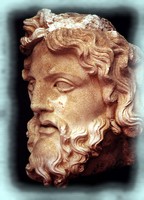
Zeus was a bit fed up about this and so dispatched a fleet to Athens seeking revenge for the murder of his son. He conquered the Greek city but instead of razing it to the ground he ordered that Athens send to Crete 7 men and 7 virgin women every year, to be sacrificed to the Minotaur who dwelt in the Labyrinth.
The King of Athens was upset with this arrangement and wanted to put an end to it. It happened that his son, Theseus, volunteered to be one of the 7 young men, so he could kill the fearsome Minotaur.
To signal the success of his mission, his father would see white sails on his ship replacing the black sails.
Now, Minos' daughter Ariadne happened to fall in love with Theseus, and so with her help, he was successful in killing the bull-like beast.
However, he was so excited with having found his true love and killing the Minotaur that he forgot to change the sails on his ship. When the King of Athens saw the black sails approaching, he killed himself in his grief, by throwing himself off the cliff into the sea.
Contact and Entrance Fee Details for the Knossos Archaeological Site
- Telephone: +30 2810 231940
- Fax: +30 2810 322570
- Email: efahra@culture.gr
Entrance Fees:
- Full Admission: €15
- Reduced Admission: €8 Available for EU citizens over 65 and students from outside the EU.
- Free Admission: Granted to persons under 25 from EU countries and university students.
Free Admission Days:
- 6 March (in memory of Melina Mercouri)
- 18 April (International Monuments Day)
- 18 May (International Museums Day)
- The last weekend of September annually (European Heritage Days)
- 28 October (Ohi Day)
- Every first Sunday from 1 November to 31 March
Please note that the first Sunday of each month offers free admission, except in July, August, and September. In these months, the free admission day is typically the second Sunday.
For the most current information, it's advisable to contact the site directly or visit the official website:
How to Get to Knossos
Knossos is located just 5 kilometres southeast of Heraklion, making it an easy and popular day trip from Crete’s bustling capital.
By Bus:
You can catch the No. 2 bus to Knossos from the main Heraklion bus station. Look out for buses clearly marked with "Knossos" on the front. Buses run frequently throughout the day, especially during the tourist season, making it a convenient and budget-friendly option.
By Car:
If you're driving, simply follow the signs for Knossos along Route 99 from Heraklion. The route is well-marked, and the drive takes about 10–15 minutes depending on traffic. There’s parking available near the site, but it can get busy during peak hours, so arriving early is recommended.
We hope you have enjoyed our Knossos Ancient Palace Guide, and it helps to enhance your visit, if you choose to go!
Want to discover even more of what Crete has to offer?
Explore hidden gems, must-visit spots, and insider tips below!
Just Some of the Reasons We Love Crete
Did you love this page? Please share it with your friends!
© Copyright All Original Content 2006 - 2025 Completely-Crete.com. All
Rights Reserved. Reproduction in whole or in part without permission is
not permitted.
Click here to learn about developing your own money-generating website
from Solo Build It! - even with little or no web experience!
